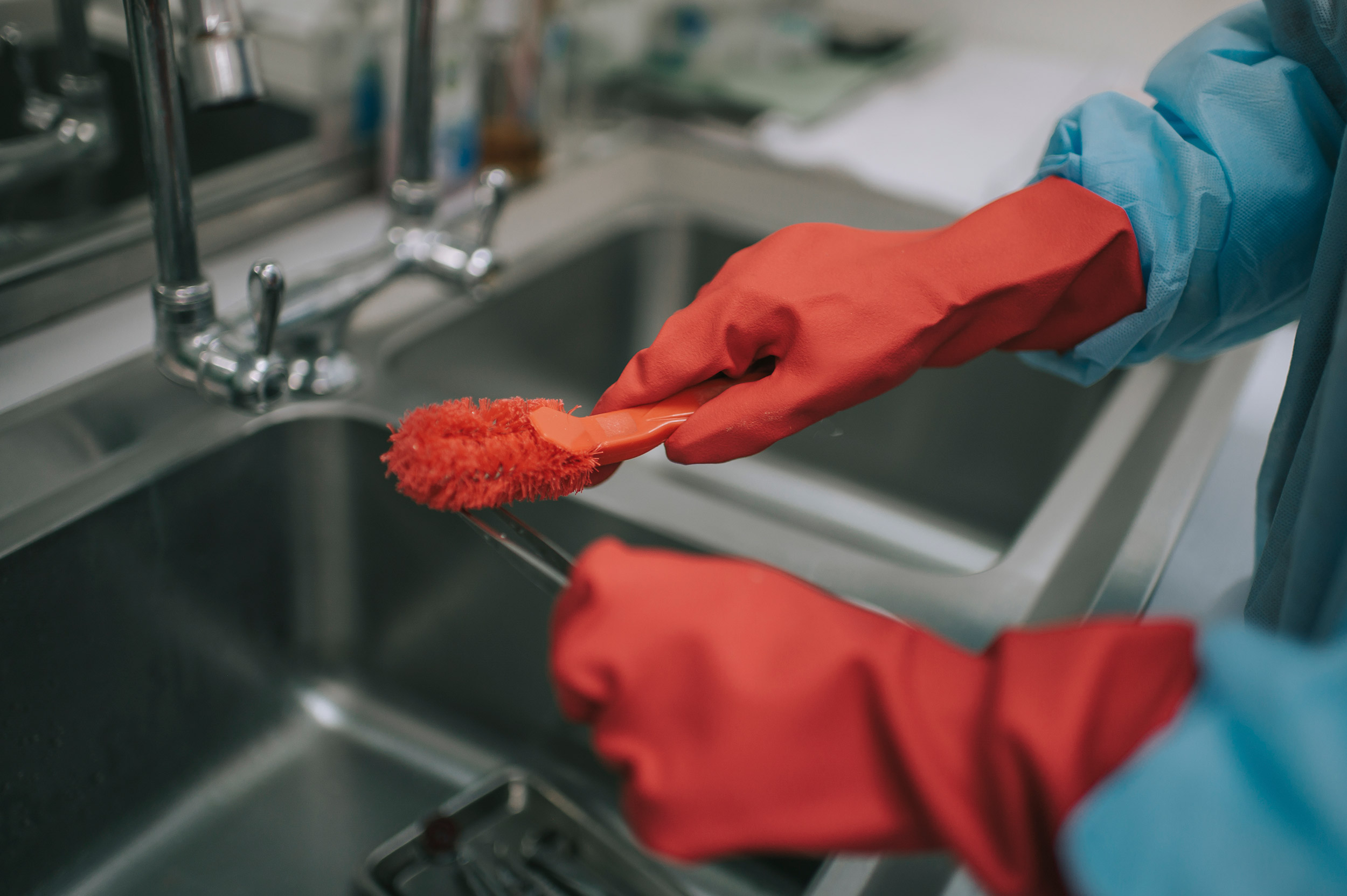
Gastroenterologists may be splashed in the face with contaminants in close to half of endoscopic procedures.
But the risk of exposure from splashing is not unique to GI endoscopists, Cori L. Ofstead, an epidemiologist with more than 25 years of experience, said in a recent webinar.
In her latest webinar for Ofstead & Associates — “Making a Splash: Contaminated Droplet Dispersal in Decontamination Areas” — Ofstead argues that concern about droplet dispersal and pathogen spraying needs to extend beyond procedure rooms and into the sterile processing unit.
While there should be concern for doctors and nurses performing aerosol-generating procedures, “I think it’s time to take a look at the other personnel who get splashed all the time — sterile processing and endoscopy personnel,” she said.
Reprocessing endoscopes is a complex procedure that requires close to 100 steps and can take up to two hours to complete. Society guidelines warn about the risk to healthcare workers handling dirty endoscopes, especially if disinfectants or contaminated scopes meet open skin or the mucous membranes of the eyes, nose, or mouth.
But, Ofstead says, there’s increased risk of exposure from splashing during the actual cleaning process as well.
“Do you think that the blood, tissue fragments, and bodily fluids stay nicely contained in transport basins and sinks?” she said.
To illustrate her point, Ofstead presented results from a recent pilot study designed to assess the range of splashing during typical reprocessing of a ureteroscope.
Endoscope channels must be scrubbed during the manual clean phase of disinfection, prior to being moved to an automatic endoscope reprocesser (AER). During the scope's manual clean, splashing was observed up to five feet away from the sink and droplets were found on the reprocessing technician from their face mask to their shoe covers.
While more research is needed, Ofstead said the preliminary results indicate that proper PPE — and perhaps even double layers — is “needed from head to toe.”
The webinar includes recommendations for reprocessing suite set up and best practices for protecting reprocessing personnel against splashing. Ofstead & Associates webinars can be found at https://ofstead.elevate.commpartners.com/.


